Bitter Melon Tub Planting: Unlock the secrets to growing your own thriving bitter melon vine, even without a sprawling garden! Have you ever dreamed of harvesting your own fresh, slightly bitter, and incredibly healthy bitter melons right from your patio or balcony? I know I have! This comprehensive DIY guide will walk you through every step of the process, transforming an ordinary tub into a productive and beautiful mini-garden.
Bitter melon, also known as bitter gourd, has a rich history deeply intertwined with traditional medicine and culinary practices across Asia and Africa for centuries. It’s not just a vegetable; it’s a cultural staple! But let’s be honest, sometimes growing it can feel a little intimidating, especially if you’re short on space.
That’s where this bitter melon tub planting guide comes in. Many people struggle with limited garden space, poor soil conditions, or simply the lack of time to dedicate to extensive gardening. This DIY project solves all of those problems! By using a tub, we can create the perfect growing environment, control the soil quality, and easily manage the plant’s needs. Plus, it’s a fantastic way to add a touch of greenery and fresh produce to even the smallest of living spaces. So, get ready to roll up your sleeves and discover how easy and rewarding growing your own bitter melon can be!
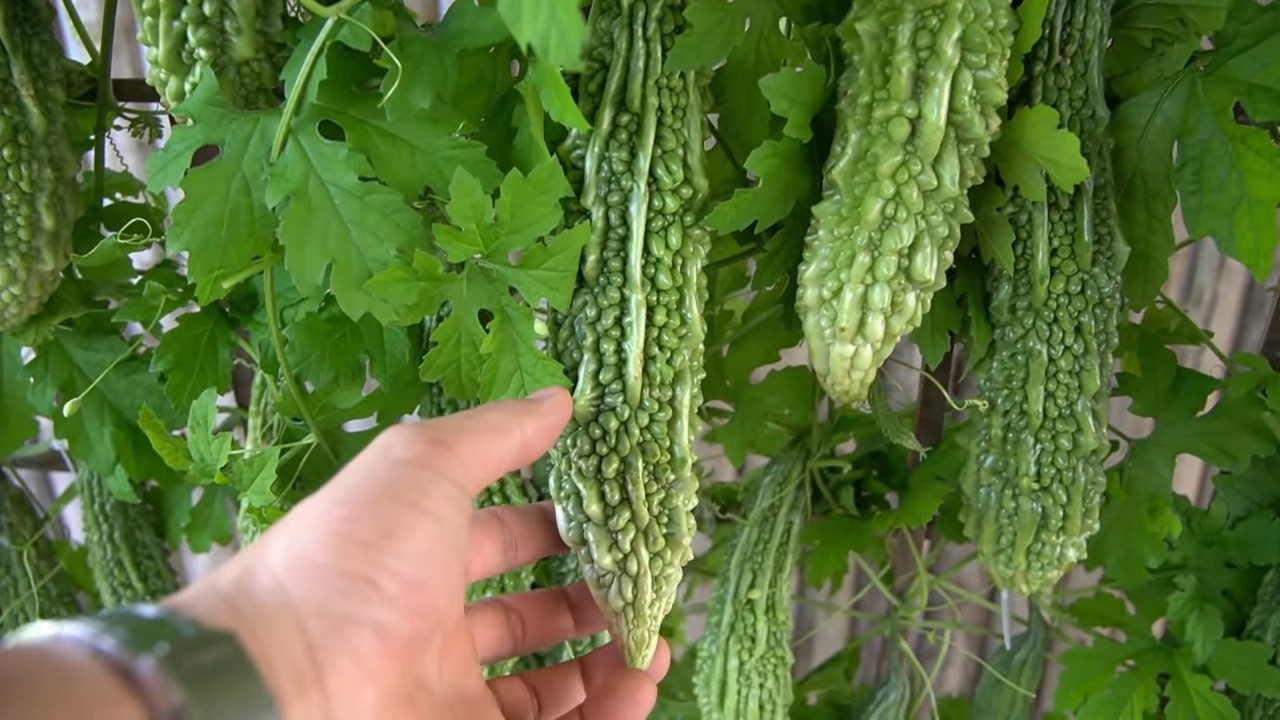
Growing Bitter Melon in a Tub: A DIY Guide for Bountiful Harvests!
Hey there, fellow gardening enthusiasts! I’m so excited to share my experience with growing bitter melon (also known as karela or bitter gourd) in a tub. It’s a fantastic way to enjoy fresh, homegrown produce, even if you don’t have a sprawling garden. Trust me, with a little effort and the right know-how, you can have a thriving bitter melon vine right on your patio or balcony!
This guide will walk you through every step, from choosing the right tub to harvesting your delicious (and yes, bitter!) bounty. Let’s get started!
Choosing the Right Tub and Location
Before we dive into the planting process, let’s talk about the foundation of our project: the tub and its location. These are crucial for the success of your bitter melon.
* Tub Size: Bitter melon vines are vigorous growers, so they need ample space for their roots to spread. I recommend a tub that’s at least 24 inches in diameter and 18 inches deep. The bigger, the better, really! A half wine barrel or a large, sturdy plastic container works perfectly.
* Drainage: Excellent drainage is non-negotiable. Bitter melon hates soggy roots. Make sure your tub has drainage holes at the bottom. If it doesn’t, drill some! I usually go for about 4-5 holes, each about half an inch in diameter.
* Material: You can use plastic, terracotta, or even a repurposed container. Just ensure it’s food-grade if you’re using a recycled container. I personally prefer plastic tubs because they’re lightweight and retain moisture better than terracotta.
* Location, Location, Location: Bitter melon thrives in full sun. Aim for a spot that gets at least 6-8 hours of direct sunlight per day. A south-facing balcony or patio is ideal. Also, consider wind protection. A sheltered spot will prevent your vine from being damaged by strong winds.
Preparing the Soil
Now that we’ve got our tub and location sorted, let’s focus on the soil. Bitter melon needs well-draining, nutrient-rich soil to flourish.
* Soil Mix: I like to use a mix of equal parts:
* Potting Mix: This provides good drainage and aeration.
* Compost: This adds essential nutrients and improves soil structure.
* Well-rotted Manure: This provides a slow-release source of nitrogen, which is crucial for vine growth.
* pH Level: Bitter melon prefers a slightly acidic to neutral soil pH (around 6.0 to 7.0). You can test your soil pH using a soil testing kit, available at most garden centers. If your soil is too alkaline, you can amend it with sulfur or peat moss.
* Filling the Tub: Before filling the tub, I like to place a layer of gravel or broken pottery at the bottom to further improve drainage. Then, fill the tub with your prepared soil mix, leaving about 2-3 inches of space at the top.
Planting the Seeds or Seedlings
Okay, now for the exciting part – planting! You can either start your bitter melon from seeds or purchase seedlings from a nursery. I’ve done both, and both methods work well.
* Starting from Seeds:
1. Soaking the Seeds: To improve germination, soak the bitter melon seeds in warm water for 24 hours before planting. This helps soften the seed coat and encourages sprouting.
2. Sowing the Seeds: Sow the seeds directly into the tub, about half an inch deep and 2-3 inches apart. I usually plant 3-4 seeds per tub, just to be on the safe side.
3. Watering: Gently water the soil after planting, making sure not to dislodge the seeds. Keep the soil consistently moist but not waterlogged.
4. Germination: Bitter melon seeds typically germinate in 7-14 days, depending on the temperature.
* Planting Seedlings:
1. Choosing Seedlings: Select healthy seedlings with strong stems and vibrant green leaves. Avoid seedlings that are root-bound or show signs of disease.
2. Transplanting: Gently remove the seedlings from their containers and plant them in the tub, spacing them about 12-18 inches apart.
3. Watering: Water the seedlings thoroughly after transplanting.
Providing Support: Trellising is Key!
Bitter melon is a climbing vine, so it needs a sturdy trellis to support its growth. This is where things get creative!
* Trellis Options:
* Bamboo Trellis: A simple and inexpensive option. You can create a teepee-shaped trellis using bamboo poles.
* Wire Mesh Trellis: A durable and long-lasting option. You can attach wire mesh to a wooden frame or use a pre-made wire trellis.
* Netting: A lightweight and easy-to-install option. You can drape netting over a frame or attach it to a wall or fence.
* Installing the Trellis: Install the trellis as soon as you plant the seeds or seedlings. This will give the vine something to climb as it grows. Make sure the trellis is securely anchored to the tub or the surrounding area.
* Training the Vine: As the vine grows, gently guide it onto the trellis, using plant ties or twine to secure it. Encourage the vine to spread out evenly across the trellis.
Watering and Fertilizing
Consistent watering and regular fertilization are essential for healthy growth and abundant fruit production.
* Watering: Water deeply and regularly, especially during hot and dry weather. Check the soil moisture regularly by sticking your finger into the soil. If the top inch feels dry, it’s time to water. Avoid overwatering, as this can lead to root rot.
* Fertilizing: Feed your bitter melon vine every 2-3 weeks with a balanced liquid fertilizer. Look for a fertilizer with an NPK ratio of 10-10-10 or 20-20-20. You can also use organic fertilizers, such as compost tea or fish emulsion. I like to alternate between chemical and organic fertilizers for the best results.
* Foliar Feeding: In addition to regular fertilization, you can also foliar feed your vine with a diluted seaweed extract. This helps boost growth and improve fruit quality.
Pest and Disease Control
Like any plant, bitter melon can be susceptible to pests and diseases. Here’s how to keep your vine healthy and productive.
* Common Pests:
* Aphids: These tiny insects suck sap from the leaves and stems. You can control them with insecticidal soap or neem oil.
* Spider Mites: These tiny mites create webs on the leaves and cause them to turn yellow. You can control them with miticides or by spraying the leaves with water.
* Cucumber Beetles: These beetles feed on the leaves and flowers. You can control them with insecticides or by hand-picking them off the plants.
* Common Diseases:
* Powdery Mildew: This fungal disease causes a white, powdery coating on the leaves. You can control it with fungicides or by improving air circulation around the plants.
* Downy Mildew: This fungal disease causes yellow spots on the leaves and a grayish-white mold on the underside. You can control it with fungicides or by avoiding overhead watering.
* Prevention is Key: The best way to control pests and diseases is to prevent them from occurring in the first place. Keep your garden clean and free of debris, and water your plants properly. Inspect your plants regularly for signs of pests or diseases, and take action immediately if you spot any problems.
Pollination
Bitter melon produces separate male and female flowers. For fruit to develop, the female flowers need to be pollinated.
* Natural Pollination: Bees and other insects can pollinate the flowers naturally. However, if you’re growing your bitter melon in a confined space, you may need to hand-pollinate the flowers.
* Hand-Pollination: To hand-pollinate, use a small paintbrush to transfer pollen from the male flowers to the female flowers. The male flowers have a long, thin stem, while the female flowers have a small, immature fruit at the base.
* Timing: The best time to hand-pollinate is in the morning, when the flowers are open and the pollen is fresh.
Harvesting
Finally, the moment we’ve all been waiting for – harvesting!
* When to Harvest: Bitter melon is typically ready to harvest about 2-3 months after planting. The fruits should be firm and green, with a slightly waxy coating. The size of the fruit will vary depending on the variety.
* How to Harvest: Use a sharp knife or pruning
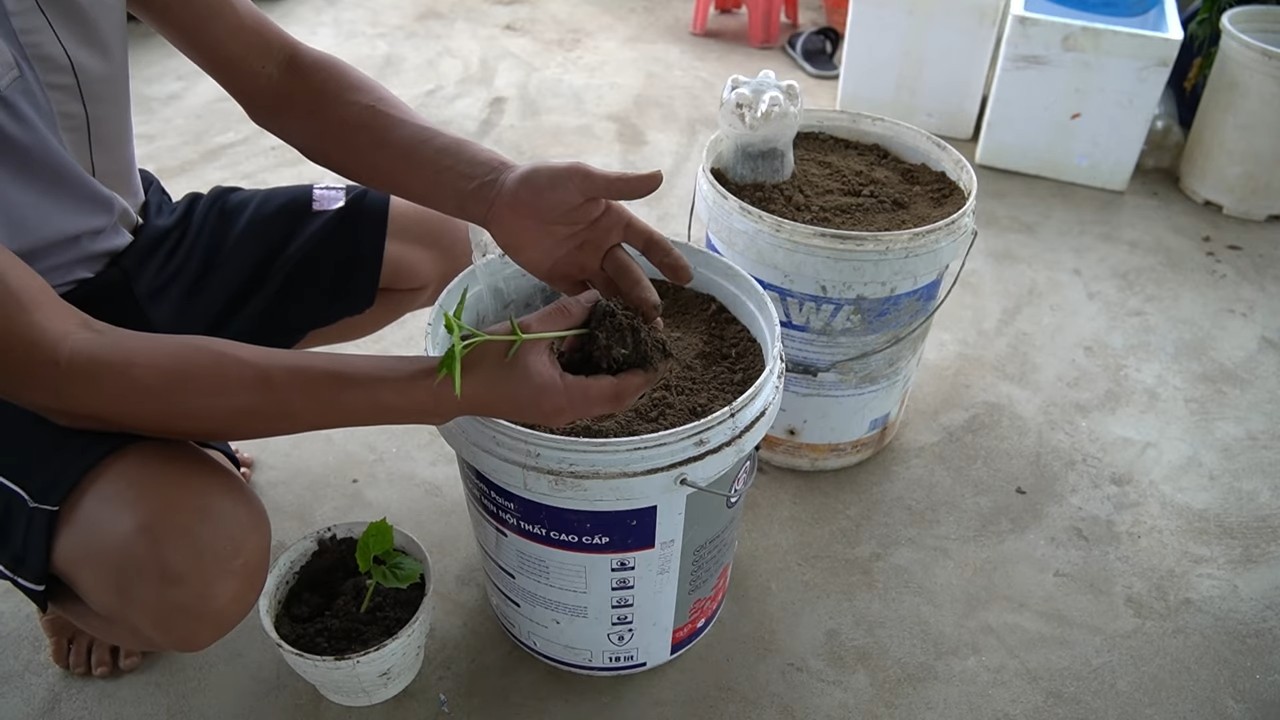
Conclusion
So, there you have it! Transforming a humble bitter melon into a thriving tub-grown plant is not only achievable but also incredibly rewarding. We’ve walked through the process, highlighting the key steps from seed preparation to ongoing care, and hopefully, dispelled any myths about the difficulty of growing this unique vegetable in a container.
Why is this DIY trick a must-try? Because it democratizes access to fresh, homegrown bitter melon, regardless of your garden size or experience level. Whether you live in an apartment with a sunny balcony or have a sprawling backyard, the tub planting method allows you to cultivate this nutrient-rich gourd right at your fingertips. Imagine the satisfaction of harvesting your own bitter melon, knowing exactly where it came from and how it was grown.
Beyond the convenience, growing bitter melon in a tub offers greater control over the growing environment. You can easily move the tub to optimize sunlight exposure, protect it from harsh weather conditions, and manage soil quality more effectively. This is particularly beneficial if you live in a region with unpredictable weather patterns or less-than-ideal soil.
But the benefits don’t stop there. Tub planting also minimizes the risk of soilborne diseases and pests that can plague in-ground gardens. By isolating the plant in a controlled environment, you create a healthier and more resilient growing space.
Looking for variations? Absolutely! Consider experimenting with different types of bitter melon seeds. There are numerous varieties available, each with its own unique flavor profile and appearance. Some are more bitter than others, while some have smoother skin and a more elongated shape. Try a few different varieties to discover your personal favorite.
You can also customize the soil mix to suit your specific needs. While the recommended mix of potting soil, compost, and perlite works well for most situations, you can adjust the proportions based on your local climate and soil conditions. For example, if you live in a particularly dry area, you might want to add more compost to help retain moisture.
Another fun variation is to experiment with different trellising methods. While a simple bamboo stake or trellis will suffice, you can get creative with your support system. Consider using a decorative trellis or even repurposing an old ladder to create a unique and eye-catching display.
Finally, don’t be afraid to experiment with companion planting. Certain herbs and flowers can help deter pests and attract beneficial insects to your bitter melon plant. Marigolds, basil, and nasturtiums are all excellent choices.
We wholeheartedly encourage you to try this DIY bitter melon tub planting trick. It’s a fun, rewarding, and ultimately delicious way to connect with nature and enjoy the fruits (or rather, vegetables) of your labor. And most importantly, don’t forget to share your experience with us! We’d love to hear about your successes, challenges, and any variations you’ve tried. Share your photos and stories on social media using #BitterMelonTubPlanting and let’s create a community of passionate home gardeners. Embrace the challenge and discover the joys of growing your own bitter melon! This **bitter melon** growing method is a game changer.
Frequently Asked Questions (FAQ)
1. What is the best size tub for growing bitter melon?
A tub that is at least 18 inches in diameter and 18 inches deep is generally recommended. This provides ample space for the roots to develop and allows the plant to grow to its full potential. Larger tubs are always better, as they provide more room for root growth and help retain moisture. A 20-24 inch tub would be ideal. Make sure the tub has drainage holes to prevent waterlogging.
2. How much sunlight does bitter melon need?
Bitter melon thrives in full sun, meaning it needs at least 6-8 hours of direct sunlight per day. If you live in a particularly hot climate, you may want to provide some afternoon shade to prevent the leaves from scorching. Observe your plant closely and adjust its location as needed to ensure it’s getting enough sunlight. If you don’t have enough natural sunlight, consider using grow lights to supplement.
3. What kind of soil should I use for bitter melon?
A well-draining soil mix is essential for growing healthy bitter melon. A good mix consists of equal parts potting soil, compost, and perlite. The potting soil provides a base for the plant to grow, the compost adds nutrients and improves drainage, and the perlite helps to aerate the soil and prevent compaction. Avoid using heavy clay soil, as it can retain too much moisture and lead to root rot.
4. How often should I water my bitter melon plant?
Water your bitter melon plant regularly, especially during hot and dry weather. The soil should be kept consistently moist, but not waterlogged. Check the soil moisture level by sticking your finger into the soil. If the top inch of soil feels dry, it’s time to water. Water deeply, allowing the water to drain out of the drainage holes. Avoid watering the leaves, as this can promote fungal diseases.
5. How do I fertilize my bitter melon plant?
Bitter melon is a heavy feeder and requires regular fertilization to produce abundant fruit. Start fertilizing your plant about two weeks after transplanting it into the tub. Use a balanced fertilizer, such as a 10-10-10 or 20-20-20, diluted to half strength. Fertilize every two weeks throughout the growing season. You can also supplement with organic fertilizers, such as compost tea or fish emulsion.
6. How do I trellis my bitter melon plant?
Bitter melon is a vining plant and requires a trellis or other support system to climb. You can use a bamboo stake, a trellis, or even an old ladder. The trellis should be sturdy enough to support the weight of the plant and its fruit. Train the vines to climb the trellis by gently tying them to the support with twine or plant ties.
7. When can I harvest my bitter melon?
Bitter melon is typically ready to harvest about 2-3 months after planting. The fruit should be firm and green, but not too hard. The size of the fruit will vary depending on the variety. Harvest the fruit when it reaches the desired size and color. Use a sharp knife or pruning shears to cut the fruit from the vine.
8. What are some common pests and diseases that affect bitter melon?
Common pests that affect bitter melon include aphids, spider mites, and squash bugs. These pests can be controlled with insecticidal soap or neem oil. Common diseases that affect bitter melon include powdery mildew and downy mildew. These diseases can be prevented by providing good air circulation and avoiding overhead watering. If your plant does develop a disease, treat it with a fungicide.
9. Can I grow bitter melon from seed?
Yes, you can easily grow bitter melon from seed. Soak the seeds in warm water for 24 hours before planting to improve germination. Plant the seeds about 1 inch deep in a seed starting mix. Keep the soil moist and warm. The seeds should germinate in about 1-2 weeks. Once the seedlings have developed a few true leaves, they can be transplanted into the tub.
10. Is bitter melon really that bitter?
Yes, bitter melon is known for its distinctive bitter taste. However, the bitterness can be reduced by soaking the sliced melon in salt water for about 30 minutes before cooking. You can also remove the seeds and pith, which are the most bitter parts of the fruit. The bitterness is also less pronounced in younger, smaller fruits. Many people enjoy the unique flavor of bitter melon and find it to be a refreshing and healthy addition to their diet.


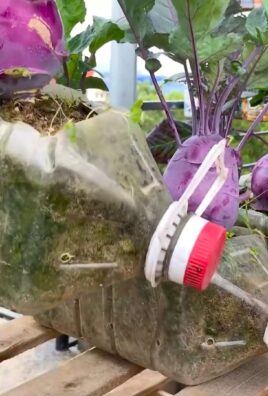
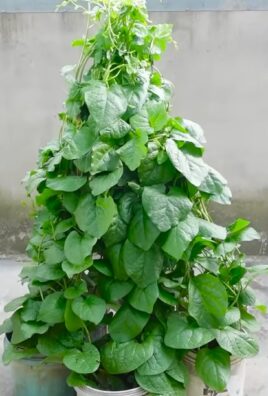
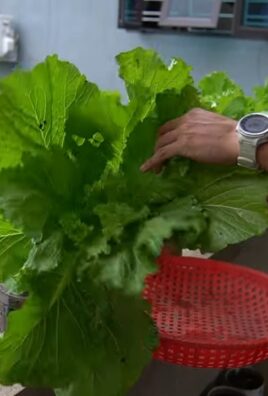
Leave a Comment